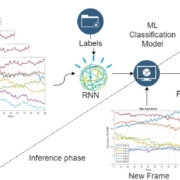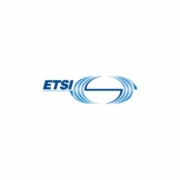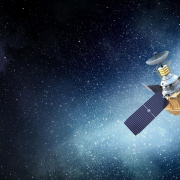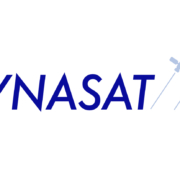Release 18 – Nicolas Chuberre: Simulations will be crucial in optimizing the resource usage in future satellite networks
As preparations are made for the 3GPP Release 18, Nicolas Chuberre of Thales Alenia Space in France and Jani Puttonen of Magister Solutions give an account of what the SatCom industry should expect of it, and how the simulations will play a key role in the future.
Release 17 from the 3rd Generation Partnership Project (3GPP) will soon make history by completing the standardization of Non-Terrestrial Networks (NTN) hence creating the first global standard for SatComs operating in low frequency bands. Although the work is still in progress, it is expected to be complete at the end of spring 2022. However, the 3GPP community has already started planning Release 18. This new release is targeted to optimize the performance of NTN and define the enablers for NTN to operate at frequencies above 10 GHz.
Release 18’s the most relevant targeted satellite network scenarios are:
- Direct connectivity to commercial smartphones or to IoT devices from satellite in order to extend the terrestrial coverage
- Indirect connectivity to terminals equipped with directional antenna (e.g. Very Small Aperture Terminal or Earth Station in Motion) to provide connectivity to a hot spot in a remote area or on board a moving platform (e.g. Vessels, Trains, bus, aircrafts)
We at Magister want our 5G NTN system simulator and Magister SimLab Service to respond to these coming needs and requirements in the best way possible. That’s why we asked the 3GPP NR-NTN-solutions work item rapporteur, Nicolas Chuberre, and Magister’s Director of Simulation Service, Jani Puttonen, to tell us what to expect from the Release 18.
Future SatCom solutions will be supported by the 3GPP ecosystem
SatCom networks have traditionally been built as closed and proprietary solutions with no need, for example, for multi-vendor interoperability. What are the benefits for the global SatCom market of the current 3GPP efforts to standardize NTNs?
– 3GPP is currently making every effort to define and standardize the enhancements to the 5G system and the New Radio protocol (NR) to support satellite networks. They should apply to all satellite network orbits (LEO, MEO, GEO), all types of terminal (handset, VSAT, ESIM, IoT devices), all services, and all satellite frequency spectrum. This will create a single ecosystem and global market for all SatCom solutions, while also making it easier for satellites to be integrated into mobile systems, describes Chuberre.
– 3GPP NTN standard will surely bring a lot of benefits to both satellite industry as well as consumers. For example, the standardization will draw more chipset and device manufactures to the SatCom world and thus, bring the prices down through competition. Integrating the terrestrial and non-terrestrial networks provides reach to truly global coverage and seamless service continuity, says Puttonen.
Release 18 optimizes Non Terrestrial Networks’ performance
As 3GPP NTNs are being standardized for Release 17, 3GPP is simultaneously making plans for Release 18. What are the most important and interesting features of Release 18 for NTNs and why?
– Release 17 provides the foundational features for 5G-based satellite networks. Release 18 will focus more on enhancing those features to optimize their running performance; allowing NTNs to operate at new frequency bands (e.g. above 10 GHz); to meet regulation requirements associated with certain services; and to enable new service capabilities, Chuberre summs.
As a member of the 3GPP, Magister Solutions brings its specified experience to the standardization work:
– We at Magister Solutions position ourselves as a neutral impartial player at 3GPP. We do not have our own agenda driven by IPRs or such, but we aim to provide our views backed up by system simulation results and related R&D to assist in successful specification of 3GPP NTN’s. For sure, successful market adoption of NTNs requires sufficient performance, but it is important to widen the business perspectives by means of support for different frequency bands, terminal types, etc, tells Puttonen.
Simulations making the crucial resource optimization easier
Improved functionality, operating at a greater scale, and so on, are making SatCom systems increasingly complex. How important are simulations, when studying new SatCom systems?
– As the communication systems are getting more and more advanced, they are also getting more and more complex. The understanding of how the system would work, how the system should be parameterized and what would be the expected performance requires advanced system simulations. In addition, the availability of spectrum is the key issue and thus, it is important to optimize the resource allocation to get the most bits out of it, adds Puttonen.
– Given the scarcity of resources at all levels (RF power and onboard computing power), it is essential that satellite frequency spectrum usage is optimized. In this respect, complex simulations can really help both in the design and assessment of performance under different sets of constraints, says Chuberre.
Magister Solutions is a member of the technical specification group for 3GPP’s Radio Access Network (RAN). Nicolas Chuberre is Solution Line Manager at Thales Alenia Space in France, leading representative of Thales in 3GPP TSG RAN and rapporteur of NR-NTN-solutions work item.
We at Magister Solutions offer simulators to support your standardization work through our Magister SimLab service. Request for more info here!
Keywords: 3GPP, 5G, NTN
